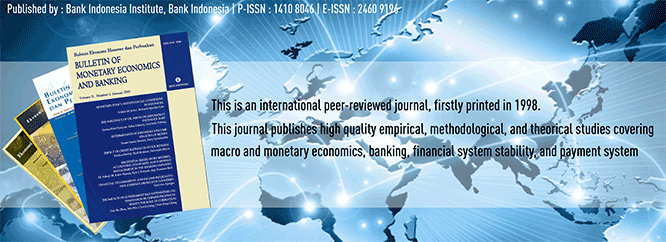
Document Type
Article
Abstract
Stock return volatility is a very interesting phenomenon because of its impact on global financial markets. For instance, an adverse shocks in one country’s market can be transmitted to other countries’ market through a particular mechanism of transmission, causing the related markets to experience financial instability as well (Liu et al., 1998). This paper aims to determine the best model to describe the volatility of stock returns, to identify asymmetric effect of such volatility, as well as to explore the transmission of stocks return volatilities in seven countries to Indonesia’s stock market over the period 1990-2016, on a daily basis. Modeling of stock return volatility uses symmetric and asymmetric GARCH, while analysis of stock return volatility transmission utilizes Vector Autoregressive system. This study found that the asymmetric model of GARCH, resulted from fitting the right model for all seven stock markets, provides a better estimation in portraying stock return volatility than symmetric model. Moreover, the model can reveal the presence of asymmetric effects on those seven stock markets. Other finding shows that Hong Kong and Singapore markets play dominant roles in influencing volatility return of Indonesia’s stock market. In addition, the degree of interdependence between Indonesia’s and foreign stock market increased substantially after the 2007 global financial crisis, as indicated by a drastic increase of the impact of stock return volatilities in the US and UK market on the volatility of Indonesia’s stock return.
Recommended Citation
Sari, Linda Karlina; Achsani, Noer Azam; and Sartono, Bagus
(2017)
"THE VOLATILITY TRANSMISSION OF MAIN GLOBAL STOCK'S RETURN TO INDONESIA,"
Bulletin of Monetary Economics and Banking: Vol. 20:
No.
2, Article 1.
DOI: https://doi.org/10.21098/bemp.v20i2.813
Available at:
https://bulletin.bmeb-bi.org/bmeb/vol20/iss2/1
First Page
229
Last Page
256
Creative Commons License

This work is licensed under a Creative Commons Attribution-NonCommercial 4.0 International License
Country
Indonesia
Affiliation
Bogor Agricultural University







